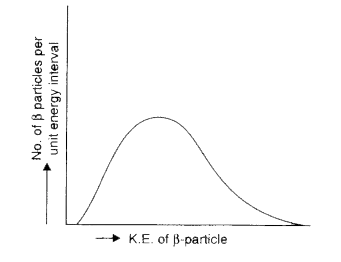Dividing a negative beta dacay
as atomic electron is ejection
as electron which is already present within the nuclease is ejection
a neclues in the nuclease decay emiting an electron
a part of the necule the binding energy of the nuclease is converted into an electron
The correct Answer is:C
in the correct option
λmin=hceV
Topper's Solved these Questions
- MODERN PHYSICSBOOK - SUNIL BATRA (41 YEARS IITJEE PHYSICS)CHAPTER - MODERN PHYSICSEXERCISE - MCQ (One Correct Answer
1 Videos
- ELECTROSTATICSBOOK - SUNIL BATRA (41 YEARS IITJEE PHYSICS)CHAPTER - ELECTROSTATICSEXERCISE - Comprehension Based Questions
2 Videos
- MOVING CHARGES AND MAGNETISMBOOK - SUNIL BATRA (41 YEARS IITJEE PHYSICS)CHAPTER - MOVING CHARGES AND MAGNETISMEXERCISE - MCQs(d )
1 Videos
Similar Questions
fill in the blank to make the statement true.
When we divide a negative integer by a positive integer, we divide them as whole numbers and put a _____ sign before quotient.
View SolutionConsider the decay of a free neutron at rest: n⊤+e− Show that the tow-body dacay of this type must necessarily give an electron of fixed energy and, therefore, cannot for the observed continous energy distribution in the β-decay of a neutron or a nucleus.

View Solution
Knowledge Check
During a negative beta decay,
Aan atomic electron is ejectedBan electron which is already present within the nucleus is ejectedCa neutron in the nucleus decays emitting an electronDa proton in the nucleus decays emitting an electronDuring a negative beta decay:
AAn atomic electron is ejectedBAm electron which is already present in nucleus is ejected.CA neutron in the nucleus decay emitting electronsDA part of the biniding energy of the nucleus is converted into electronDuring a negative β-decay
AAn atomic electron is ejectedBAn electron which is already present within the nucleus is ejectedCA neutron in the nucleus deecays emitting an electronDA part of the binding energy of the nuckleus is converted into an elctron
.40K is an unusual isotope, in that it decays by negative beta emission, positive beta emission, and electron capture. Find the Q values for these decays.
View SolutionNucleus, although positively charged, emits negatively charged β-particles. Explain the reason.
View SolutionStaements I: .zX4 undergoes 2α-decays, 2β-decays (negative β) and 2γ-decays. As a result, the daughter product is .z−2XA−B.
Staements II: In β-decay, the mass number decreases by 4 unit and atomic number decreases by 2 unit. In β-decay (negative β), the mass number remains unchanged and atomic number increases by 1 unit. In γ-decay, mass number and atomic number remain unchanged.
View SolutionIn negative beta decay :-
View SolutionIf a nucleus .AZx emits one α-particle and one β (negative β) particle in succession, then the daughter nucleus will have which of the following configurations?
View Solution
